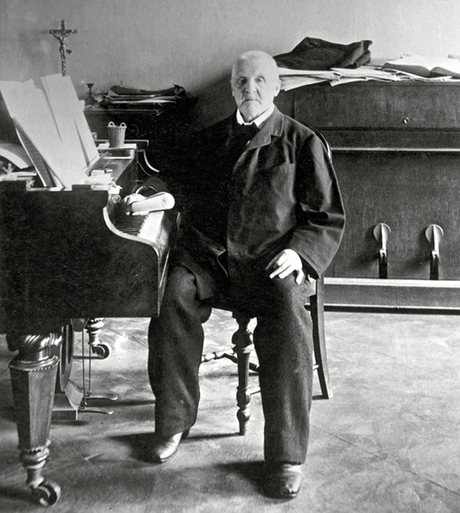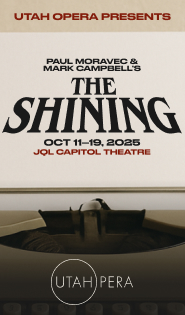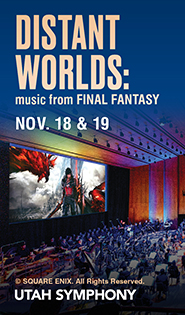Fischer, Utah Symphony scale Bruckner’s vast Fifth Symphony

Due to its intricate structure, masterful use of counterpoint, and reverent, mystical mood, Bruckner’s Symphony No. 5 is often compared to a cathedral.
Friday night, the vast work made its Utah Symphony debut as the only piece on a concert that became a monument to Maestro Thierry Fischer’s 12 years as the orchestra’s music director. The performance showcased the orchestra’s artistic growth during Fischer’s tenure as well as the conductor’s musicality, range, and flair for the sublime.
The first movement begins by introducing several contrasting, and seemingly disjoined themes in the first few minutes. It begins slowly and softly in the strings, with a walking bass line under sustained notes in the violas and violins. This is interrupted by a Wagnerian fanfare in the brass and timpani, followed by a brisk, anxious string and timpani passage and then a modulating theme in the brass that recurs throughout the piece.
Without exaggerating the contrasting tempi, as some conductors do, Fischer captured the piece’s unique architecture and the full breadth of its emotional sweep. In the first movement, he gave space to each section, carefully setting the stage for the piece’s thematic development with clear, deliberate phrasing. He infused the quiet passages with anticipation, encouraging listeners to lean in and then rewarding their attention with bursts of unabashed joy and pathos.
For this performance, Fischer altered the usual seating arrangement of the strings, placing the basses to his left rather than to his right, and the section leaders for the second violin, viola and cello in a tight circle facing him. Perhaps this was to allow all string section to better see concertmaster Madeline Adkins, so the cut-offs and phrasing were uniform. Whatever the reason, the sound in the strings was exquisite throughout, displaying a full array of colors, tones, and dynamic levels as well as clear melodic lines accentuated by lucid, communicative phrasing.
This was particularly true in the slow movement, which begins with a tense, triple-meter pizzicato line under a cautious melody in a solo oboe joined by a bassoon and then a flute. Legato strings soon enter, making the mood warmer, and more effusive and transitioning into the movement’s stately second theme, during which the strings achieved a glorious sound, imbued with wistful longing. The brass and woodwind sections also displayed stunning musicality in the second movement, which was, on the whole, deeply affecting.
The orchestra owed much of its effectiveness to principal timpanist George Brown, who had a more prominent part than usual. It fell to the timpani to punctuate the piece’s furious runs and abrupt shifts in moods. Not only did Brown provide crisp cut-offs and perfectly timed flurries, but he also displayed his instrument’s dynamic range in softer, more anticipatory passages.
The third movement, a brisk scherzo, alternates between a furiously churning quadruple meter theme and a refined waltz. Fischer and the orchestra achieved a rousing, robust sound in the former and infused the latter with charm and subtlety. The fourth and final movement—which, like the first, is marked Adagio-Allegro—is a classic recapitulation of the main themes, which have been transformed by the foregoing development. Fischer took the time to carefully phrase each recurring melody and show its transformation, making the rousing finale passages more powerful.
While Abravanel Hall was only 2/3 full, the audience was attentive and appreciative throughout. The unseasonably snowy weather and the prospect of 76 uninterrupted, late romantic music perhaps weeded out the dilettantes, and those in attendance gave the orchestra a standing ovation with several curtain calls.
This program will be repeated 5:30 p.m. Saturday. usuo.org



